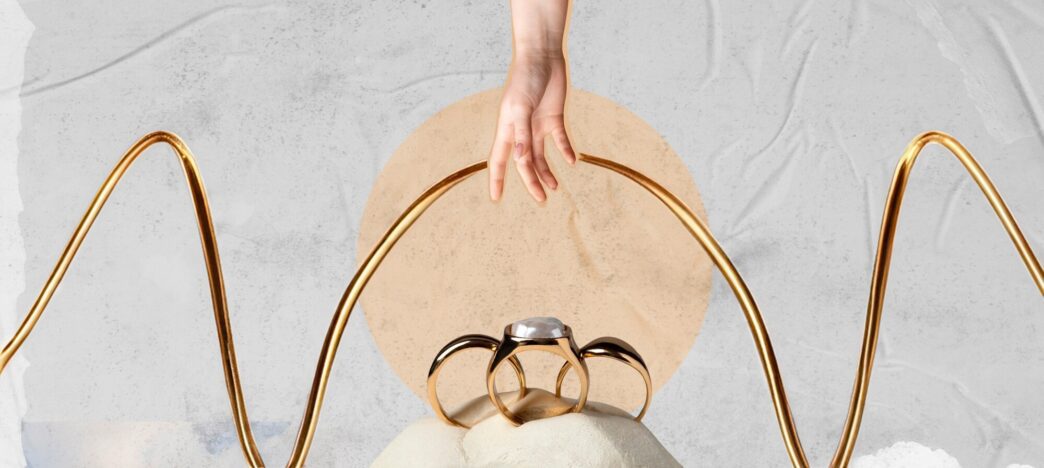Executive Summary
The Story So Far
Why This Matters
Who Thinks What?
The concept of “Quiet Luxury” has emerged as a dominant trend among the super-rich, subtly redefining how status is communicated and perceived within elite circles. This aesthetic, characterized by understated elegance, impeccable craftsmanship, and an absence of overt branding, signals a shift from conspicuous consumption to a more discerning and private display of wealth. It gained significant traction in the post-pandemic era, amplified by cultural phenomena like the HBO series Succession, as affluent individuals increasingly prioritize intrinsic value, longevity, and discretion over flashy logos and ephemeral trends. For the financially savvy, understanding this pivot offers insights into evolving consumer psychology and market dynamics at the highest echelons.
What is Quiet Luxury?
Quiet Luxury, at its core, represents an evolution in how the wealthy express their affluence. Unlike traditional luxury, which often relies on recognizable brand logos and ostentatious displays, quiet luxury is about subtlety and discernment. It prioritizes unparalleled quality, timeless design, and superior craftsmanship, often evident only to those who are similarly attuned to its nuances.
This approach moves away from the “look at me” mentality, embracing an “if you know, you know” philosophy. The value is embedded in the material, the construction, and the exclusive experience, rather than in external validation through brand recognition. It’s a strategic choice for those who no longer need to prove their wealth, but rather wish to refine its expression.
The Origins and Evolution of Discreet Wealth
While “Quiet Luxury” feels contemporary, its roots are deeply embedded in historical class distinctions. “Old money” families have long favored understated elegance, valuing heritage, quality, and discretion over flashy displays that might be associated with “new money” or aspirational wealth. This traditional approach to luxury has always been about signaling membership in an exclusive social stratum, rather than broadcasting wealth to the masses.
The recent resurgence of quiet luxury can be attributed to several converging factors. The global pandemic fostered a period of introspection, leading many to re-evaluate consumption habits and seek more meaningful, lasting value. Concurrently, increased public scrutiny of extreme wealth, coupled with rising economic inequality, has made overt displays of affluence less palatable for some of the ultra-rich. The popular culture influence, notably from shows depicting the lifestyles of the elite without overt branding, further cemented its appeal.
Key Characteristics of Quiet Luxury
Identifying quiet luxury requires an understanding of its defining attributes, which extend beyond mere aesthetics to fundamental values.
Unmistakable Quality and Craftsmanship
The cornerstone of quiet luxury is an unwavering commitment to quality. This manifests in the selection of the finest materials—think cashmere, silk, virgin wool, or ethically sourced leather—and meticulous attention to detail in construction. Garments are perfectly tailored, furniture is handcrafted, and accessories are built to last a lifetime, often reflecting generations of artisanal skill.
This emphasis on intrinsic quality means that items are not merely expensive, but genuinely superior in their make. The investment is in durability, comfort, and performance, ensuring that products stand the test of time both physically and aesthetically.
Subtle Branding
Perhaps the most distinguishing feature of quiet luxury is the deliberate absence of conspicuous logos or brand identifiers. While the item may originate from a world-renowned luxury house, its branding is either invisible, subtly embossed, or confined to an interior label. This allows the product itself—its design, material, and feel—to speak volumes.
The wearer or owner gains status not from displaying a brand name, but from possessing an item whose quality is discernible to a discerning eye. It signifies an insider’s knowledge, a preference for substance over superficial branding.
Timeless Design
Quiet luxury eschews fleeting trends in favor of enduring, classic designs. Silhouettes are clean, colors are often muted or neutral, and styles are versatile enough to transcend seasons and years. This approach reflects a desire for longevity and sustainability, moving away from the disposable nature of fast fashion and rapid consumption cycles.
Investing in timeless pieces ensures that they remain relevant and elegant for decades, offering a consistent aesthetic that is always appropriate. This also aligns with a more conscious consumption philosophy, where fewer, better items are preferred over many ephemeral ones.
Exclusivity and Discretion
Many quiet luxury experiences and products are inherently exclusive, often involving bespoke services, limited editions, or private access. This exclusivity is not loudly advertised but is a natural consequence of high-quality, labor-intensive production and personalized service. Whether it’s a custom-fitted suit, a private jet charter, or a secluded five-star retreat, the emphasis is on a tailored experience away from the public eye.
Discretion also plays a role in personal security and privacy for the ultra-wealthy. By not overtly flaunting their possessions, they maintain a lower profile, which can be a practical consideration in an increasingly transparent world.
Why the Shift? The Psychology Behind Discretion
The embrace of quiet luxury is driven by a complex interplay of psychological, social, and economic factors.
Beyond Brand Recognition
For those at the pinnacle of wealth, the need for external validation through widely recognized brands diminishes. Their status is already established. Instead, quiet luxury allows them to signal to an “in-group” of peers who possess similar levels of discernment and understanding. It becomes a subtle code, a shared language of understated sophistication that only truly resonates within their exclusive circles.
Economic Climate and Social Sensitivity
In an era marked by significant global challenges and widening wealth gaps, overt displays of opulence can appear tone-deaf or even provoke resentment. Quiet luxury offers a way for the super-rich to maintain their standard of living without appearing excessively ostentatious. It allows them to navigate social landscapes with a degree of sensitivity, avoiding unnecessary attention or criticism.
A Rejection of Fast Fashion and Consumerism
Many affluent consumers are increasingly mindful of environmental impact and ethical sourcing. Quiet luxury, with its emphasis on durability, timelessness, and quality over quantity, aligns well with a more sustainable and responsible consumption philosophy. It represents an investment in items that are designed to last, reducing waste and supporting skilled artisans.
Privacy and Security
In a hyper-connected world, privacy is a luxury in itself. By opting for unbranded, understated items, wealthy individuals can maintain a lower public profile. This reduces the risk of being targeted for theft or unwanted attention, offering a practical layer of security alongside aesthetic preference.
Where Quiet Luxury Manifests
Quiet luxury permeates various aspects of the affluent lifestyle, from personal adornment to living spaces and travel experiences.
Fashion and Accessories
In fashion, quiet luxury is evident in impeccably tailored suits from Savile Row, cashmere sweaters from understated Italian brands, or unbranded leather handbags crafted with exquisite detail. Colors are typically neutral—navy, charcoal, beige, white—and fabrics are luxurious to the touch. The focus is on fit, drape, and the intrinsic beauty of the material.
Home and Lifestyle
Within the home, quiet luxury translates into bespoke furniture made from rare woods, minimalist décor that emphasizes space and natural light, and high-end, integrated appliances that blend seamlessly into their surroundings. It’s about creating an environment of serene comfort and sophisticated functionality, where every object serves a purpose and is of the highest possible quality without being showy.
Travel and Experiences
Travel in the realm of quiet luxury often involves private charters, exclusive villa rentals in secluded locations, or personalized itineraries managed by discreet concierge services. The emphasis is on unparalleled service, privacy, and authentic, curated experiences rather than public displays of extravagance. These are journeys designed for ultimate comfort and discretion.
Implications for Brands and Consumers
The rise of quiet luxury has significant implications for both the luxury industry and the broader consumer market.
For Luxury Brands
Brands are adapting by emphasizing their heritage, craftsmanship, and the intrinsic value of their products. Many are launching “unbranded” lines or focusing their marketing on the story behind the creation rather than overt logos. This shift encourages a deeper connection with the discerning consumer, highlighting the artistry and exclusivity that truly define luxury.
For Mainstream Consumers
While quiet luxury is inherently exclusive, its principles offer valuable guidance for mainstream consumers seeking financial well-being and growth. Embracing a “buy less, buy better” philosophy means investing in fewer, higher-quality items that last longer, reducing overall consumption and potentially saving money in the long run. It encourages a more mindful approach to spending, prioritizing durability and timelessness over fleeting trends, a practice that aligns with sound financial management and sustainable living.
The Enduring Appeal of Understated Wealth
Quiet luxury signifies more than just a passing trend; it reflects a deeper cultural and economic shift among the world’s wealthiest. It is a strategic redefinition of status, moving away from overt displays to an appreciation of intrinsic quality, craftsmanship, and discretion. By understanding this evolving landscape, individuals can gain insight into the sophisticated psychology of elite consumption and apply principles of discerning value to their own financial and lifestyle choices, ultimately fostering a more thoughtful and sustainable approach to wealth and well-being.








